|
|
|
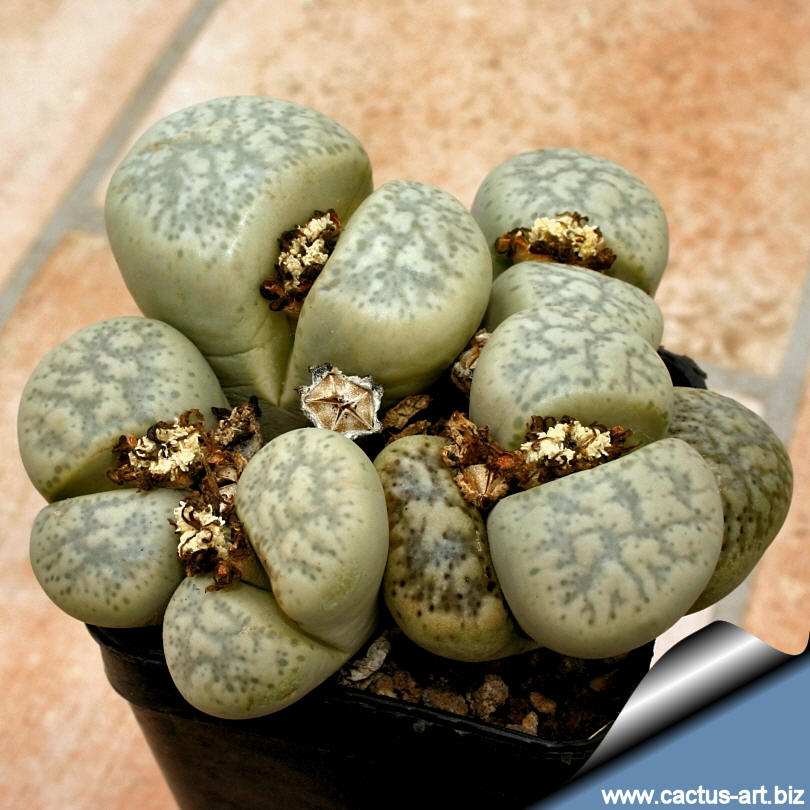
Lithops franciscii C140 TL: 35 km East of Lüderitz,
Namibia
|
|
Description: L. franciscii is generally
smaller than most Lithops and (especially in cultivation)
tends to grow not buried in the ground and often shows an elongated
shape rather than the classical underground cordate (heart-shaped) form.
It is easily recognizable for the very numerous dull grey-green dots on
an opaque beige, grey-white or cream body often with yellow, green or
pink nuances. It can form quite large groups with up to 20 or more
heads, but usually it as only 3 to 6 heads. This species grows quickly
from seed and flower easily.
Body (paired leaves): Usually distinctly convex, sometimes
truncated; bifurcate with a deep fissure (about 6-12 mm); the lobes
lobes are conjunct to slightly divergent.
Face: The top face is opaque, smooth to rugose, slightly
elevated, with almost always unequal lobes. This species usually do not
shows clearly evident margins or shows very irregular margins, with
fragmented peninsulas. The windows are usually occluded or absent giving
the surface its typical opaque aspect. The surface shows narrow,
indistinct and slightly impressed dull grey-green channels and also a
network of nebulous, very irregular and fragmented island, but the top
of the leaves are scattered by numerous dots ( dusky dots) that are
transparent round, small, up to 0,5 mm in Ø, very slightly impressed.
The patterns of colour of the dots on the face is more or less regular
within certain ranges of similarity over the whole face, but often they
are concentrated in and along the border of the channels, it is also
arduous to tell apart between concentrations of dots and channels. For
this species, the dusky dots are very specific ranging in colour from
dull grey through dull green.
Flowers: Yellow, small sized up to 25 mm in diameter, but usually
less.
Fruit: 5 loculed capsules.
Seeds: Yellowish brown, rugose.
|
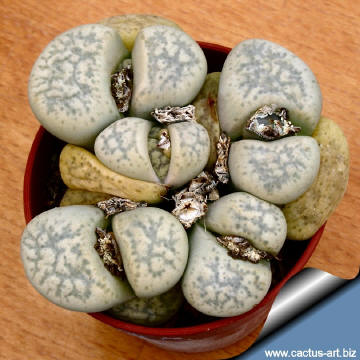
Lithops franciscii C140 |
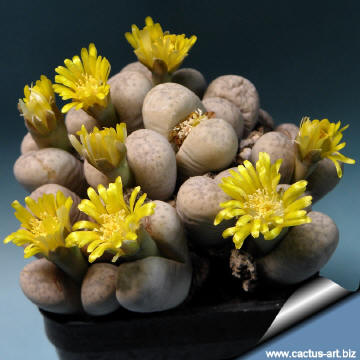
Lithops franciscii C140 |
|
. |
|
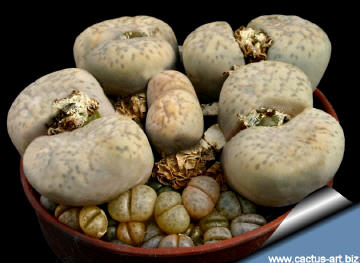
Lithops franciscii C140
This uncommon species has somewhat elongated
leaves which show delicate pastel colours
and patterns. It propagates easily by seeds: note the babies in the pot at the base of the mother plant
.
|
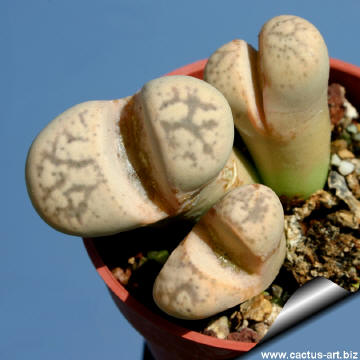
Lithops franciscii C140 |
|
. |
|
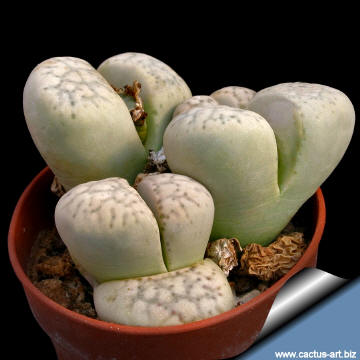
Lithops franciscii C140 |
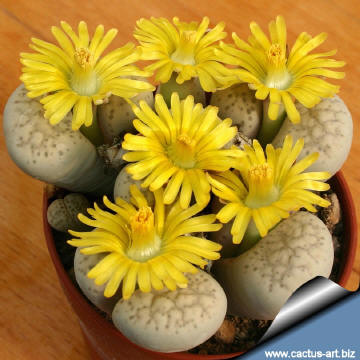
Lithops franciscii C140
|
|
Advertising
|
|
|
|
Family: Mesebrianthemaceae (Aizoaceae)
Scientific name: Lithops
francisci (Dint. & Schwant.) N.E. Br.
Place of publication: Gard. Chron. ser. 3, 79:102.
1926
Origin: It is found in a restricted range and small
population
in the Lüderitz district, Namibia.
Mesebrianthemum francisci Dint. & Schwant (basionym)
Place of publication:
Z. Sukkulentenk. 2:19. 1925
Habitat:
Its natural habitats are rocky
areas and cold desert. The stones comprises: gneiss and schist. The
colour of the background varies from light grey-white to light brown,
with some black.
Conservation status:
Listed in
CITES appendix 2.
Common English Names include: Stone plant, Living
stone.
Etymology: Named After Frantz de Laet of Contich (near
Antwerp), Belgium.
|
|
|
|
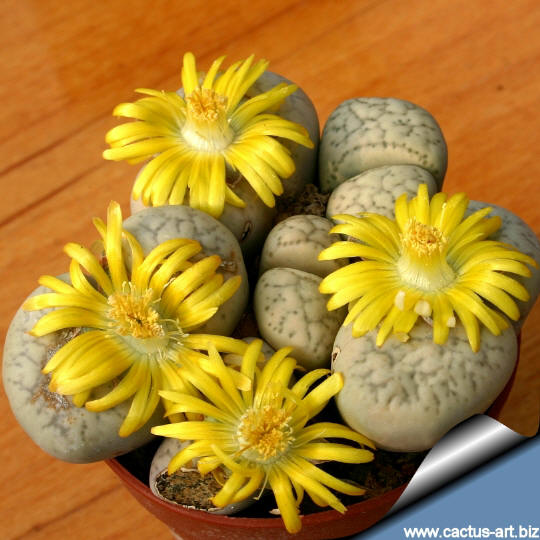
Flower are yellow in Autumn.
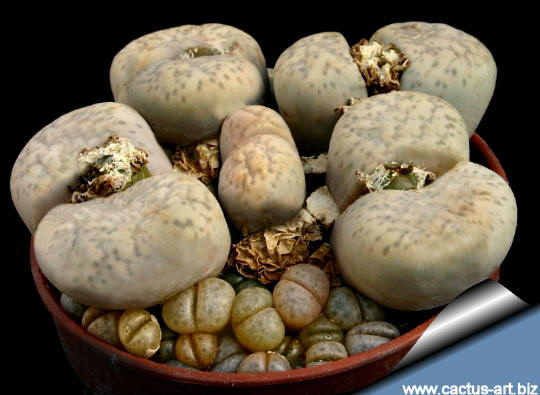
Babies at the base of the mother plant
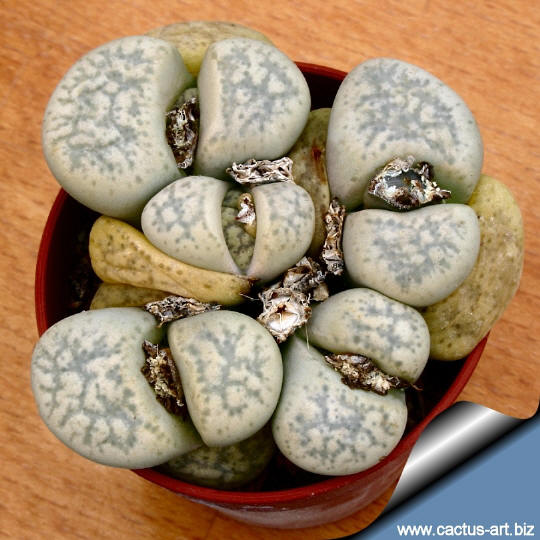
Cultivation: Need an open mineral, fast
draining mix and the maximum amount of light you are able to give them.
The basic cultivation routine is: Stop watering after flowering. Start
watering after the old leaves completely dry. (Usually late March or
Early April) Water freely during the growing season, soak the compost
fully but allow it to dry out between waterings,
no water when cold. Some growers fertilize
frequently, some hardly ever. Keep them dry during the winter. Nearly
all problems occur as a result of
overwatering and poor ventilation especially when weather
conditions are dull and cool or very humid. This plant is best for a well lit area (Bright
shade to
full sun).
Note: After flowering in the
autumn and extending through
winter
season the plant doesn’t need
watering, but they will still be
growing, the new
bodies will be increasing in size extracting
water from the outer
succulent leaves, allowing them to
shrivel away. In fact the plant in this time extracts
water and
nutrient stored in the outer
succulent leaves, allowing them to
dehydrate relocating the water to the rest of the plant and to
the new leaves that form during this period until the old leaves are
reduced to nothing more than "thin papery shells".


|
|